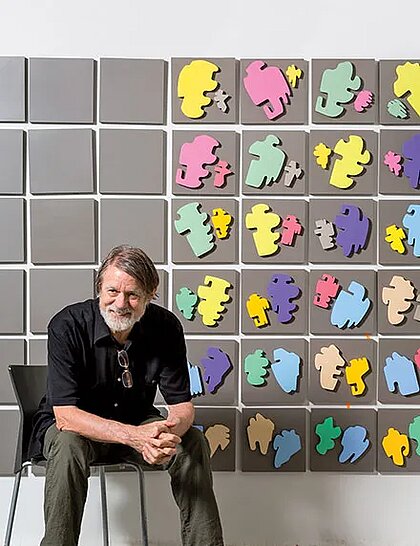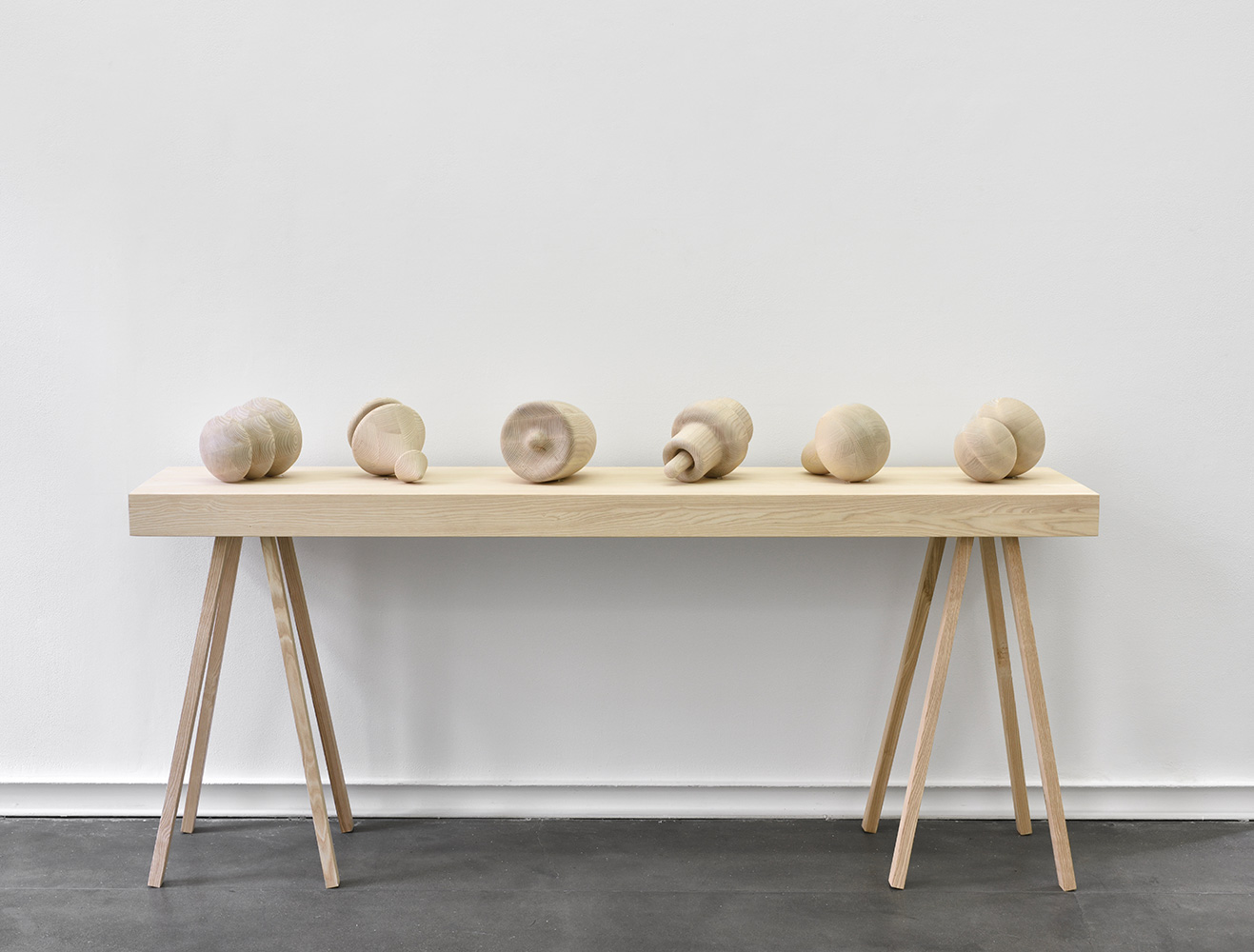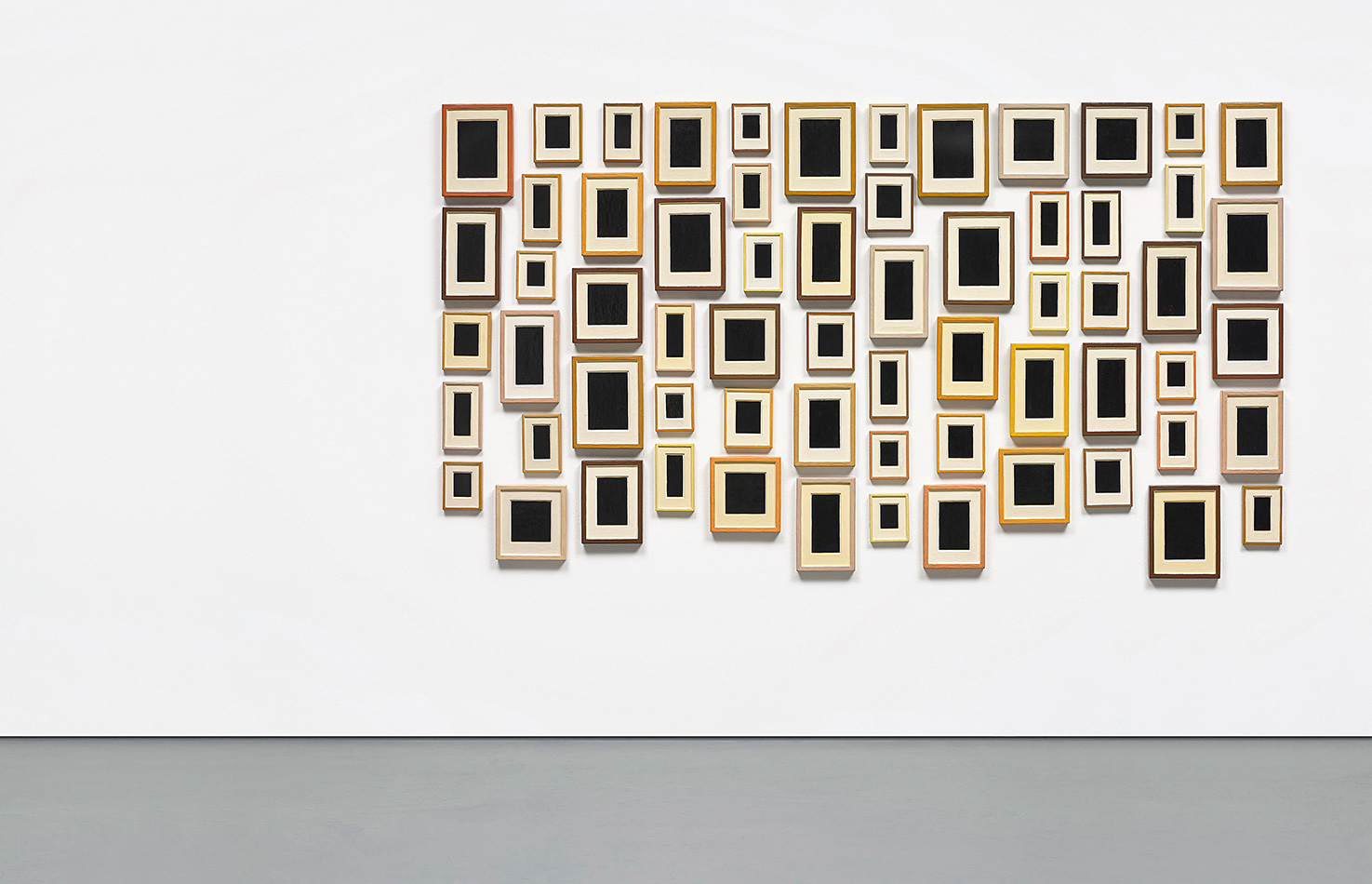United States
Allan McCollum


Biography
Né en 1944 à Los Angeles, Allan McCollum vit et travaille à New York. Ayant plus d’une centaine d’expositions personnelles à son actif, dont des rétrospectives au Musée d’art moderne de Villeneuve-d’Ascq en France (1998), au Musée Sprengel à Hanovre en Allemagne (1995-1996), à la Serpentine Gallery à Londres (1990), au Centre pour l’art contemporain Rooseum à Malmö en Suède (1990), à l’IVAM Centre del Carme à Valence en Espagne (1990), au Stedelijk Van Abbe Museum à Eindhoven aux Pays-Bas (1989), il a tout d’abord été reconnu comme un artiste minimaliste avant de s’imposer comme l’un des principaux représentants du mouvement appropriationniste.
Ses œuvres font partie des collections d’importants musées à travers le monde, dont le MoMa, le Metropolitan Museum, le Whitney Museum et le Musée Guggenheim à New York, mais également l’Institut d’art à Chicago ou le Musée d’art contemporain à Los Angeles.

About the artworks
Dans Le Meilleur des mondes (1932), l’écrivain britannique Aldous Huxley imagine une société qui utiliserait la génétique et le clonage pour le conditionnement et le contrôle des individus. Un scénario dantesque et visionnaire qui, aujourd’hui, pose de réelles questions d’éthique. Bien avant la possible réalisation de cette prédiction, Allan McCollum a mis en exergue la problématique de la démultiplication dans son propre domaine d’expression qui est celui de l’art. À travers une œuvre abondante, originale et sérielle, l’artiste américain pose la question de la représentation de l’œuvre d’art, et développe une culture du multiple et de la copie. Depuis la fin des années 1970, il interroge ainsi les modes de production, de distribution, d’acquisition, de présentation et de lecture d’une œuvre par une réflexion critique.
Pour ce faire, sans jamais avoir recours à la production industrielle, il constitue des objets simulant des œuvres d’art : il fait des séries d’objets tous semblables en apparence mais différents chacun par la couleur, la dimension ou par un détail formel. Il moule par exemple dans le plâtre des vases (Perfect Vehicles), puis les installe par milliers dans ses expositions. Poussant ce concept de parodie à son extrême, il essaie de « produire plus d’œuvres que ce que la plupart des musées possèdent dans leur inventaire ». Encourageant les collectionneurs à acquérir des ensembles plutôt que des pièces à l’unité, il adopte l’attitude d’un grossiste pour traiter l’œuvre d’art comme tout autre article commercial et fait écho aux idées avancées par Andy Warhol dans les années 1960 déjà. En démultipliant ses séries à l’infini, Allan McCollum démystifie en effet l’œuvre d’art reconnue pour son aspect unique et irremplaçable.
The artworks
03
Four Perfect Vehicles, 1992
Peinture émaillée sur hydrocal moulé
4 pièces, chacune 50 x 20 cm
Four Perfect Vehicles, 1992
Peinture émaillée sur hydrocal moulé
4 pièces, chacune 50 x 20 cm

The Shapes Project : shapes spinoffs, 2005-2014
Bois de frêne tourné à la main
Unique
6 pièces, chacune 25.4 x 16.9 cm
Installation, 100 x 195 cm
The Shapes Project : shapes spinoffs, 2005-2014
Bois de frêne tourné à la main
Unique
6 pièces, chacune 25.4 x 16.9 cm
Installation, 100 x 195 cm

Untitled, 1982-1989
Émail sur plâtre
64 parties, dimensions variables
124 x 221 cm pour cette installation
Untitled, 1982-1989
Émail sur plâtre
64 parties, dimensions variables
124 x 221 cm pour cette installation